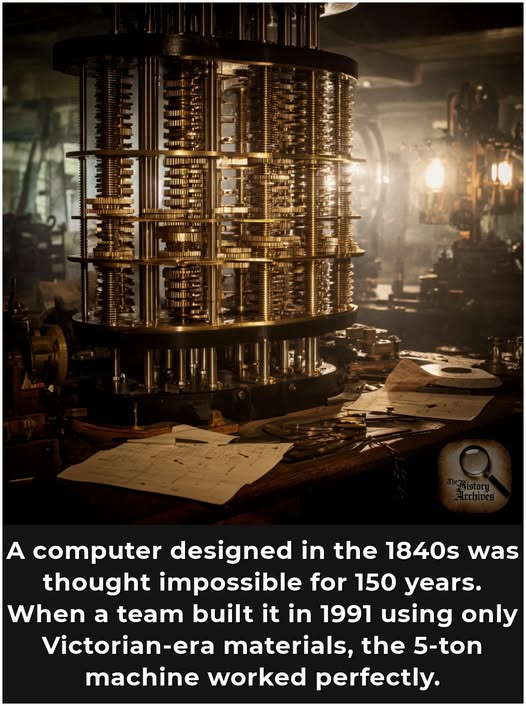
In the 1840s, English mathematician Charles Babbage designed a mechanical computer so far ahead of its time that he was never able to build it.
Known as the Difference Engine No. 2, his plans described a machine of incredible complexity, designed to calculate and print mathematical tables automatically.
For over a century, Babbage’s designs remained on paper, a brilliant but unproven concept from a mind working far beyond the technology of his era.
Then, in the late 1980s, a team at the Science Museum in London, led by curator Doron Swade, decided to take on a monumental challenge.
They would build the Difference Engine No. 2 using only the materials and engineering tolerances that would have been available to Babbage himself.
The team relied heavily on the work of scholar Allan G. Bromley, who had spent years deciphering Babbage’s often cryptic and detailed blueprints.
After years of work, the calculating section of the engine was completed in 1991. The machine consisted of over 8,000 bronze and steel parts, weighing more than five tons.
When they turned the crank for the first time, it worked perfectly, validating Babbage’s genius more than 150 years after he conceived it.
The team didn’t stop there. They went on to build the engine’s massive printing and stereotyping apparatus, completing the full machine in 2002.
The project was so successful that a second Difference Engine was commissioned and completed in 2008, funded by former Microsoft CTO Nathan Myhrvold.
The successful construction proved that Babbage’s failure was not one of design or theory, but purely of the limited manufacturing capabilities of the 19th century.
